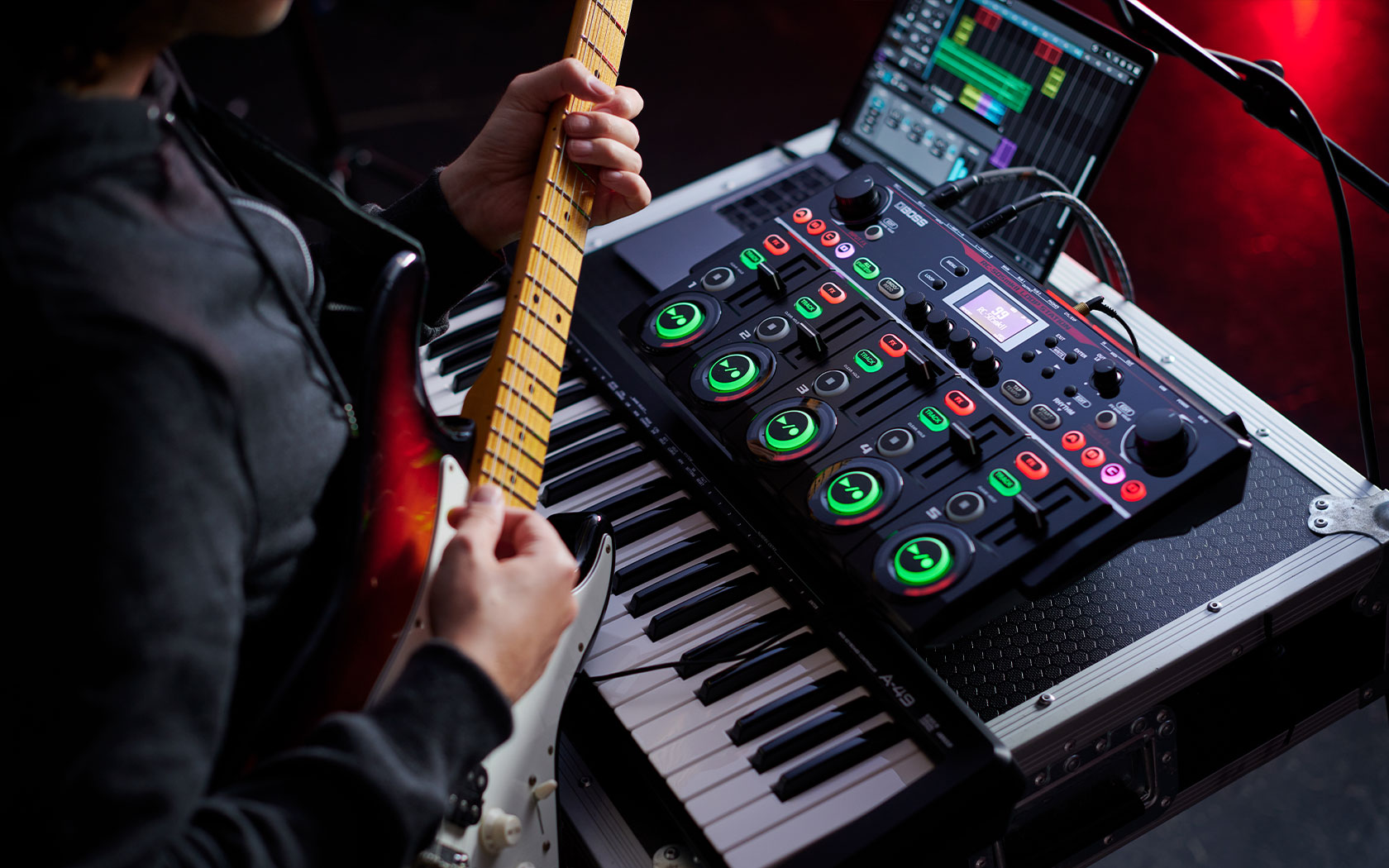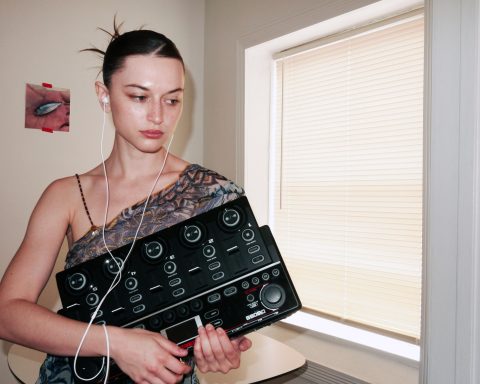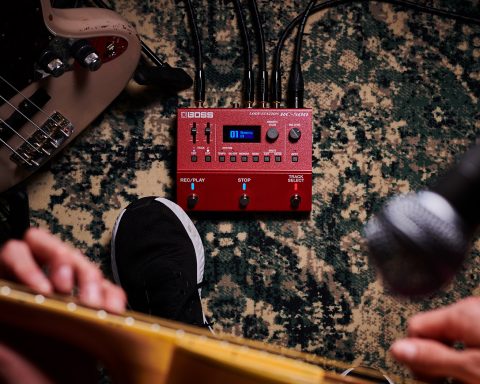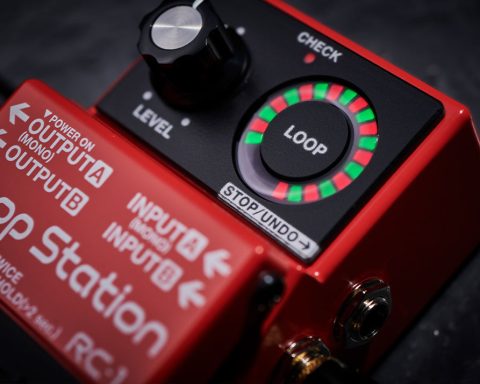For most people, the first reaction to seeing a BOSS Loop Station in action is having their minds blown. The second reaction is an irresistible urge to do it yourself. Faced with the epic one-person symphonies created by artists from Ed Sheeran to Sam Perry, you might conclude that looping is some kind of musical dark art that mere mortals could never master. But this article is here to tell you that anybody—whatever their budget, experience, instrument, technical abilities, or music taste—can get looping today.
Looping can take you anywhere, but your journey starts right here. In this hands-on guide, we’ll introduce the core features of a BOSS Loop Station, get you started with essential techniques, and share the pro tips that will take you to the next level.
Table of Contents
An Essential Creative Tool
Within minutes of unboxing your new BOSS Loop Station, you’ll have tracked a melody over a chord sequence and banked your first loop. On the flipside, years from now, as a seasoned looper, your trusty unit will remain an essential creative tool, always sparking fresh inspiration and knocking you out of ruts, whether you lean into acoustic singer-songwriting, beatbox, percussion, DJing, or production.
Elsewhere, you’ll find features on Loop Station history and a deep dive into the modern lineup. In this article, however, we’ll give a practical guide to looping, with hands-on advice on getting the best from these game-changing units.

What is a Loop Station?
Every BOSS Loop Station comes loaded with advanced features to make your life as a modern musician smoother and more creative. But before your head is turned by all the shiny stuff, let’s get down to fundamentals. At its simplest level, a looper lets you record, play back, and overdub a series of musical phrases. As a typical example, you might record a four-chord sequence, bank it in the unit’s onboard memory, and then play back that original chord sequence as a backing track while adding a solo on top.
Keep repeating this process—adding and layering melodies, percussion, basslines, vocals, harmonies, beatbox, or anything else you fancy—and pretty soon, you’ll have an epic, intricate musical creation that you can’t quite believe is all your own work. With some imagination and practice, even a basic Loop Station can make a solo performer sound like a duo, a five-piece band—even a choir or orchestra.
"With some imagination and practice, even a basic Loop Station can make a solo performer sound like a duo, a five-piece band—even a choir or orchestra."
What is a Loop Station Used For?
As a modern musician, you’ll find yourself bouncing between several different scenarios, and the BOSS Loop Station has a role to play, whichever hat you’ve got on. When you’re practicing, you’ll find these units invaluable, helping you tighten up your timing, sharpen your rhythm chops, and nail that tricky shred solo by running it repeatedly over the full-band backing loop you’ve just recorded.
You’ll also want your BOSS Loop Station close at hand when you block out a morning for writing new songs. Even with no other band members in the building, you can stack multiple parts, experiment with countermelodies, nail down arrangements, and get a vision of how the completed song might sound.
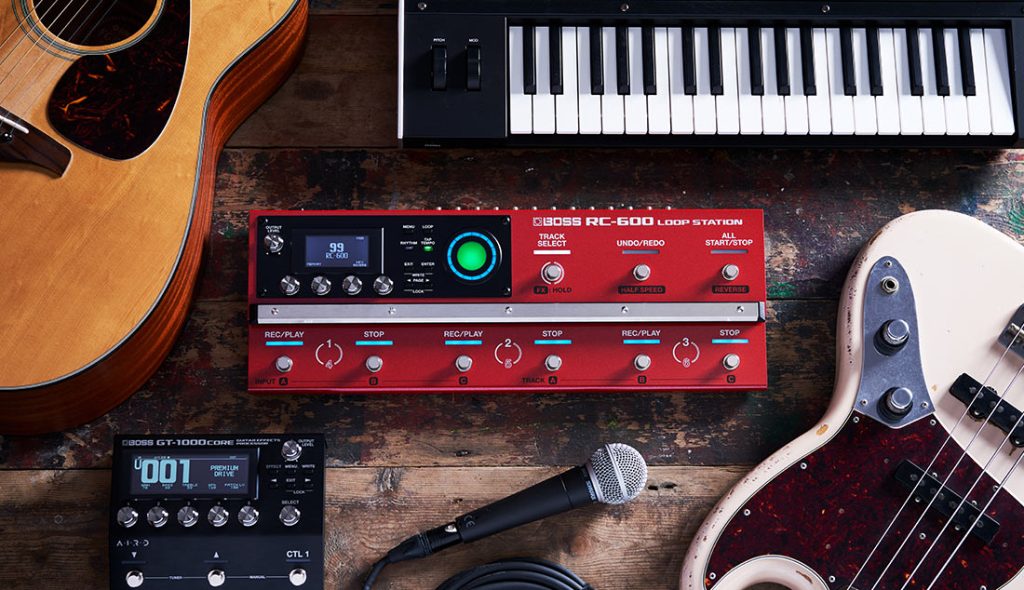
Loop Stations are often used in pro studios or as the cornerstone of Digital Audio Workstation (DAW) recording setups. But arguably, the best-known application is for playing live solo shows. It’s not always practical or financially feasible to pull together a band and travel across town carrying armfuls of instruments. But when you have a Loop Station, you are the band. Simply throw your pedal in a gigbag, breeze to the venue, plug in, and build up a mind-blowing one-person soundscape—then collect your fee without splitting the money five ways.
Anatomy of a Loop Station
You’ll be surprised how easy it is to navigate the buttons, dials, and footswitches of the more advanced units in the Loop Station range. But to demonstrate the basic operation of an entry-level looper, let’s look at the core features of the BOSS RC-1: the affordable pocket rocket that has set so many first-time loopers on their path.
Footswitch
If you’ve used any of BOSS’s world-famous stompboxes, this tank-tough footswitch will feel instantly familiar under your boots. However, whereas a typical stompbox offers a simple on/off operation, the RC-1 works slightly differently. To start recording a loop, press once. To stop recording and start the playback, press again. To kill the audio entirely, press twice in rapid succession. To wipe the phrase you just recorded, press and hold for two seconds. Pretty soon, it’ll feel like second nature.
Loop Indicator
Even when the house lights are down, that circle of color-coded LEDs tells you the status of your looping at a glance. When you’re recording, the Loop Indicator glows red. When you’re overdubbing, it’s red and green. During playback, it’s green. As the recorded loop plays back, the 24-segment circle will gradually light up alongside the music, giving you a visual reference so you consistently punch back in at the right time.
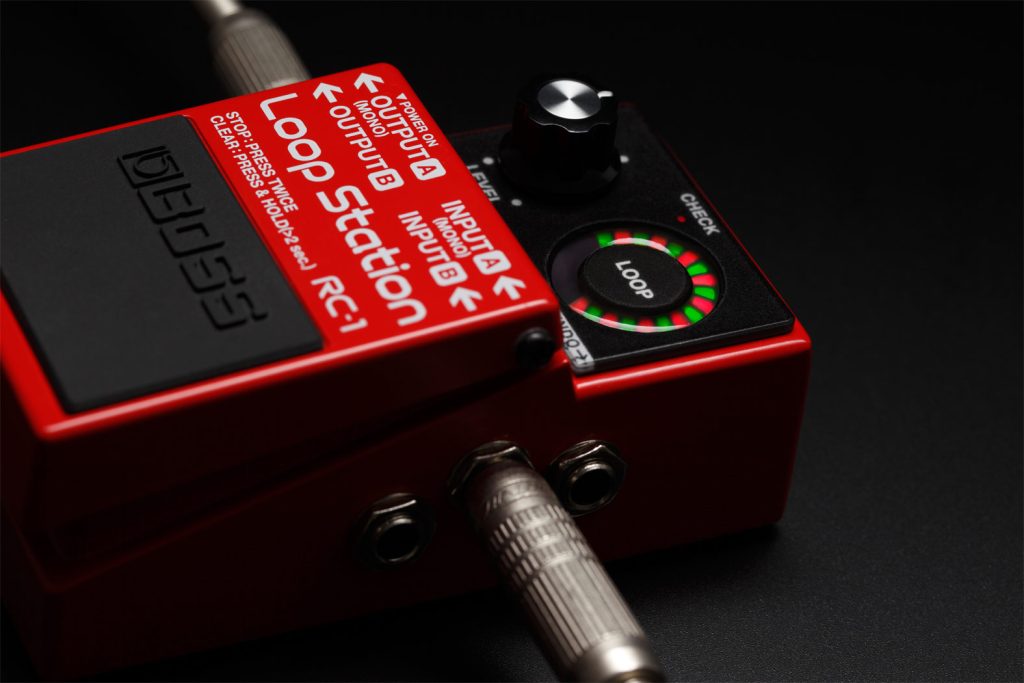
Level Dial
Your RC-1 Loop Station is also a mini-mixer. Use this no-nonsense rotary dial to adjust the volume of the looped audio as it plays back so you can hear what you’re doing on your instrument when you record the following phrase.
Input A/B Jacks
Most players will only need Input A, connecting their mono instrument (like an electric guitar) to the Loop Station using a standard 1/4” lead. However, if you’re using a stereo-output effects unit, you’ll want to use both A and B input jacks.
Output A/B Jacks
These twin outputs let you connect your Loop Station to an amp or speakers. If you’re using a simple mono setup and your sound comes from a single amplifier, just plug into Output A with a standard 1/4″ instrument cable. If you plan to achieve widescreen stereo sounds, plug into Output A and B.
"Even when the house lights are down, that circle of color-coded LEDs tells you the status of your looping at a glance."
Stop/Undo Jack
The RC-1 offers all the functionality you need right out of the box, but for even closer control as you stop, undo, and redo loops, use this socket to hook up an external footswitch like the FS-5U, FS-6, and FS-7.
Check Indicator
Before you start the gig, ensure this light is glowing bright red, indicating that it’s juiced up and ready for action. Incidentally, when powering up your rig, remember that your guitar amp should be the last thing you turn on.
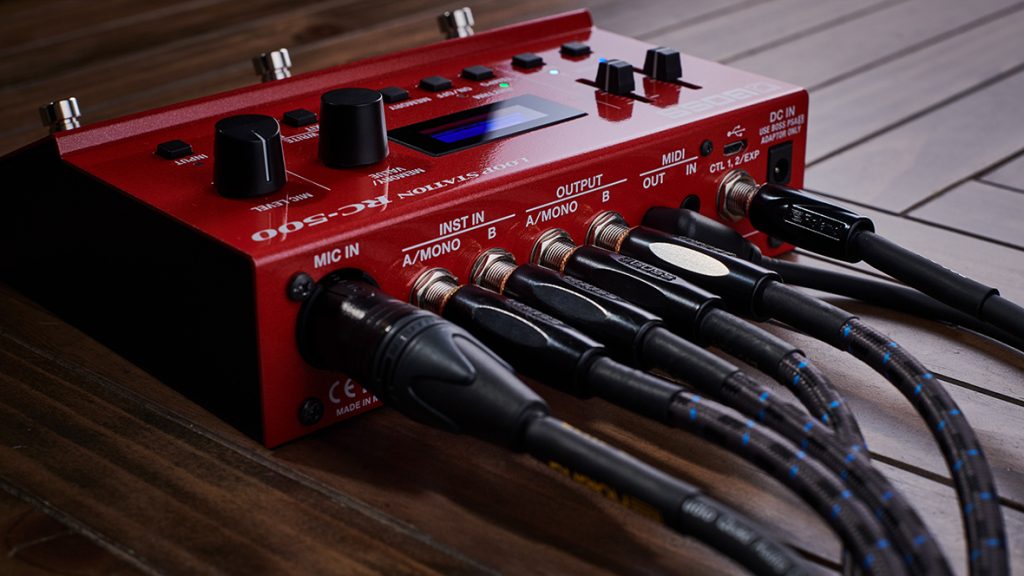
Which Loop Station Features Do I Need?
While all Loop Stations work on the same fundamental principle of tracking and stacking, you’ll find many different features across the seven-strong range. Before you visit a store for a hands-on trial, it’s vital to consider your musical ambitions, your budget, and how you plan to use your looper (practice or performance) to help decide which of the following features you need.
Format
Consider the instruments you play and how you perform, as this will determine whether a floor-based pedal or a tabletop looper suits you best. Most guitarists prefer to focus on the riffs and set up loops with a stompbox. However, the looping boom amongst DJs, beatboxers, and producers has led BOSS to develop popular tabletop units like the RC-505, ideal for setting up in a DJ booth and controlling by hand.
Number of Tracks
Single-track loopers like the RC-1 and RC-5 keep things friendly and straightforward and will be ample for singer-songwriters who want to layer a few guitar parts. But if you have a bolder vision—adding real-time vocals, keys, and drum pads, for instance—you might appreciate the dedicated multi-tracking of the RC-505MkII or RC-600.

Recording Capacity
When you first try a looper, you’ll probably start tracking short snippets. And many players will never outgrow the generous 12-minute recording capacity of the RC-1. But if you have big ideas, you’ll welcome the massive capacity of our flagship models, which offer 1.5 hours (1 track) or 13 hours (total of all memories).
Memory and Storage
Entry-level units like the RC-1 only store the loop sequence you’re working on, so you’ll have to wipe the memory at the start of each session. If you’re hoping to build up a library of loops to use at your shows, you’ll need a higher-spec Loop Station with onboard phrase memories or external storage via USB and SD card.
Effects
If you like to switch up your sound, it’s convenient, cost-effective, and inspiring to choose a looper with onboard effects. The benefit of a Loop Station is that you’ll get many of the iconic sounds that have made BOSS the market leader since 1973, spanning from atmospheric reverbs and delays to DJ-style effects like Beat Scatter.
"If you like to switch up your sound, it’s convenient, cost-effective, and inspiring to choose a looper with onboard effects."
Onboard Rhythms
For solo artists hoping to simulate a full band or keep their timing tight—it’s worth investigating a looper with built-in beats. Depending on the style of music you’re playing, you could trigger a thrash-metal double-kick assault or a lazy jazz groove, making your performance instantly more memorable and atmospheric.
Power Source
Do you plan to use your looper at clubs or for performing on the streets? All the Loop Stations in the lineup can be connected to mains electricity using an approved adaptor. Still, specific models (like the RC-1, RC-5, and RC-500) also provide the busking-friendly option of using alkaline batteries.
Controls
It’s vital to stay in control when you’re looping, and while every Loop Station is designed for intuitive operation, some players like to go even further with external gear. If that sounds like you, choose a unit that supports connectivity for outboard expression pedals (and be sure to check these are compatible).
Connectivity
Any looper can connect to an amp or speakers, but if you want to create an expanded stereo/MIDI rig, make sure you have the necessary inputs and outputs. Likewise, if you plan to hook up with your DAW setup, look for a Loop Station with USB connectivity, letting you work with computer software, back up data, and more.
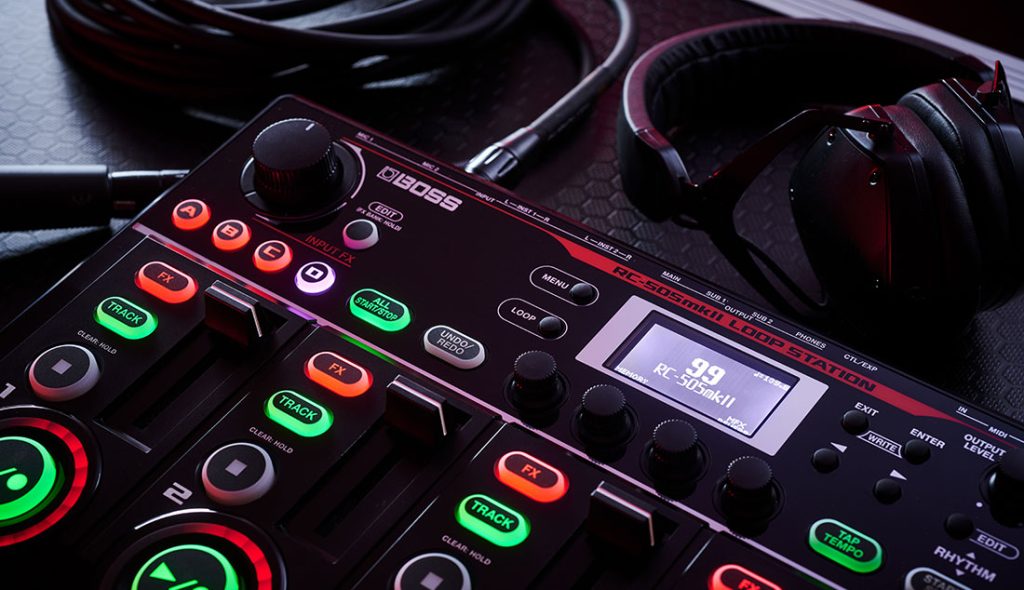
Which Loop Station Should I Choose?
The current Loop Station range includes seven models, each with its own USP. Here’s a quick rundown of each unit’s essential features, benefits, and target audience.
RC-1
Compact, budget-friendly, and straightforward to use, the RC-1 is ideal for first-time loopers. Record, playback, overdub, and undo/redo loops with a tap of your foot. With 12 minutes of stereo recording time, you can catch all your best musical ideas, and the easy-to-read 24-segment LED loop indicator allows you to monitor your performance at a glance.
- Best For: Guitarists, bassists, keyboardists
- Skill Level: Beginner
RC-5
Retaining the RC-1’s compact format but adding creative features, the RC-5 offers professional 32-bit sound, smooth operation, and inspiring built-in tools, including 50 rhythms, 13 hours of stereo recording, and 99 phrase memories. The stompbox format will suit new loopers, while USB and MIDI connectivity make the RC-5 a great long-term choice for stage work or recording.
- Best For: Guitarists, live performers
- Skill Level: Beginner, intermediate
RC-10R
The RC-10R Rhythm Loop Station boasts a selection of 280-plus onboard beats, perfect for every genre. But it’s far more than a drum machine. It inspires songwriting sessions and performances with twin stereo tracks and expanded control via external switches and MIDI.
- Best For: Singer-songwriters, live performers, guitarists
- Skill Level: Intermediate
RC-500
With twin loop tracks, mic/stereo inputs, built-in rhythms, and dynamic Loop FX, the RC-500 makes it simple to craft bold real-time soundscapes. You can even expand this unit’s capabilities with MIDI and external controls, ensuring nothing gets in the way of your creativity.
- Best For: Guitarists, singer-songwriters, multi-instrumentalists
- Skill Level: Intermediate
RC-600
This flagship of the Loop Station lineup supports multiple mics and instruments with six stereo tracks and premium 32-bit sound. The RC-600 also offers precise control via nine assignable footswitches and lets users create signature sounds via USB connectivity and a vast selection of onboard FX.
- Best For: Multi-instrumentalists, singer-songwriters, guitarists
- Skill Level: Intermediate
RC-202
Offering the RC-505MkII’s critical features in a compact tabletop unit, the RC-202 unlocks your creativity. Craft DJ and sampler-style effects with four Input FX and Track FX, then save your boldest creations to the onboard memory, ready to impress at your next club night.
- Best For: Club performers, electronic musicians, beatboxers, producers, YouTubers
- Skill Level: Intermediate
RC-505MkII
Powering up the original RC-505 spec, this next-generation tabletop looper supports your most instinctive music creation with features including five stereo tracks, four simultaneous Input FX and Track FX, expanded I/O, and closer mixing control for total expression.
- Best For: Vocalists, beatboxers, producers, YouTubers
- Skill Level: Intermediate
How Do I Get Started with a Loop Station?
The beauty of looping is that everybody has their unique take. However, you can start by following this simple three-step process when recording your first loop.
Record
Press the footswitch and start playing or singing. Press the footswitch a second time to stop recording at the end of the musical phrase.
Playback
Pressing the footswitch to stop recording will automatically initiate playback of the musical phrase you just performed, continuously cycling around in a loop.
Overdub
So, here’s the enjoyable part. While the original loop is playing, press the footswitch again and overdub a second musical phrase on top. When you’re done, stomp once more and you’ll now hear both loops play back at the same time. And repeat.
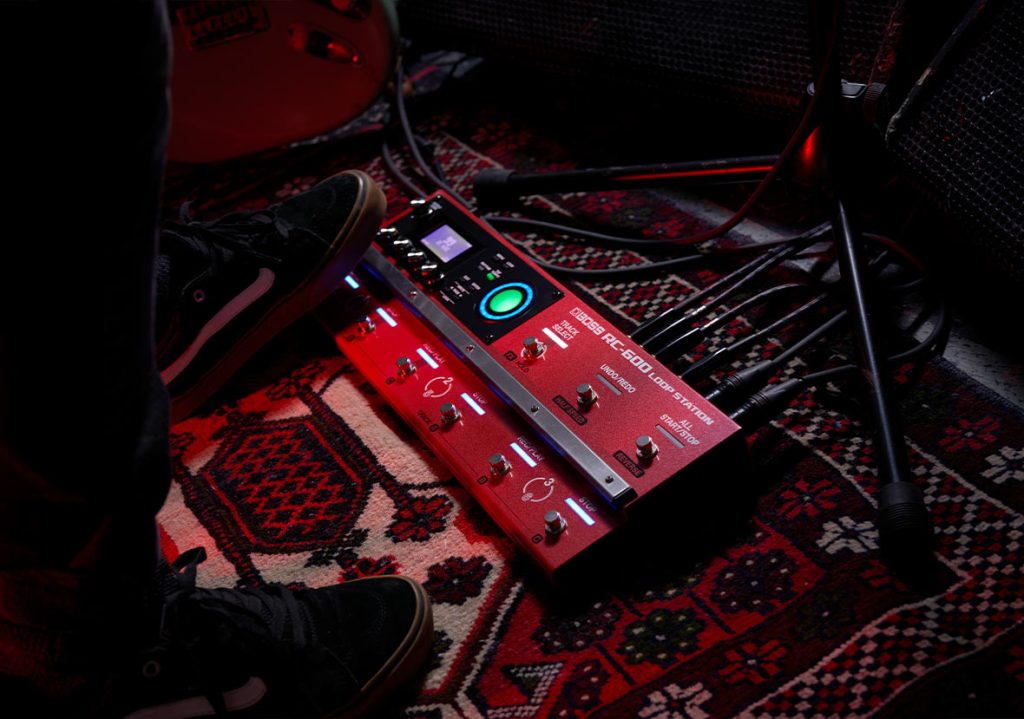
Top 5 Tips for Using a Loop Station
Even if you’re an experienced musician, you’ll find it takes some practice to perfect your looping technique. Follow these five pro tips to get great results faster.
Try a Click Track
Timing is everything when it comes to looping. So, if your Loop Station doesn’t have onboard beats, find a metronome app or click track online and run it in the background to get your performance tight in the pocket.
Stomp on the One
You’ll soon get a feel for when to punch in and out on a loop pedal, but your first attempts could be messy. If you’re recording a 4/4 measure, start playing at the same time as you press the footswitch, then end the recording cleanly by pressing again dead on the first beat of the next bar.
Take a Few Passes Before Recording
Until you’re a seasoned looper, it can be hard to start recording cold. Set up your click track and strum through the musical phrase a few times to get the feel, only stomping the footswitch to record once you’re locked in and comfortable.
"Before you go public, learn your gear inside-out, and sharpen your looping technique until you can do it with your eyes closed."
Get Your First Loop Right
When an expectant audience is watching you, it’s easy to feel the pressure and lay down an initial loop you know is slightly off but feel too stressed to correct it. Don’t do that. If the foundations are shaky, your loop will always sound baggy, and adding additional phrases will only worsen things.
Practice Makes Perfect
The great looping artists make it look easy, nonchalantly setting up multitrack symphonies while bantering with the crowd. But you don’t see the hours and hours of practice behind the scenes. Before you go public, learn your gear inside-out and sharpen your looping technique until you can do it with your eyes closed.

